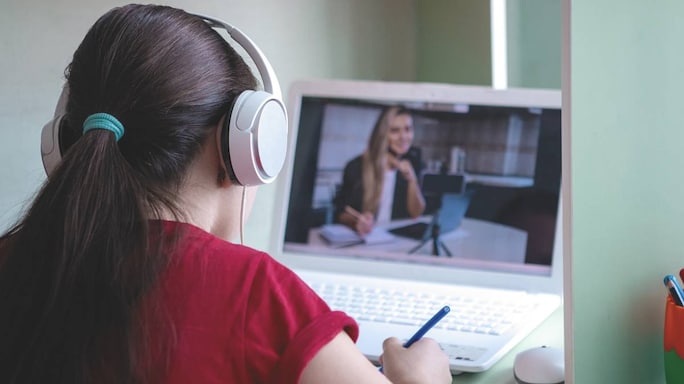As Blackboards Give Way To Screens, Best Ways To Ensure Online Learning
With classrooms going virtual in the wake of COVID-19, students, teachers and parents are adapting to the new mode of learning
 Identifying a separate space for the child to study is the first step in providing a conducive learning environment at home. Representational photo: Shutterstock
Identifying a separate space for the child to study is the first step in providing a conducive learning environment at home. Representational photo: Shutterstock
When 16-year-old Aryan Jain, a student of Class XI at Greenwood High International School in Bengaluru, attended his first online class in the wake of COVID-19, he felt he was going to a new school.
“I was sceptical at first, as I felt nothing could replicate a classroom scenario. After several connection failures and audio distortions, I slowly understood the routine and got used to the dos and don’ts of my digital school. It was like my first days in a new school,” he says.
COVID-19 and the subsequent nationwide lockdown have posed some unique challenges for students, teachers and parents.
A Study Space at Home
Online schooling is an alien concept for not just students like Jain, parents and teachers too are learning to adapt to the new method of teaching, bit by bit.
Identifying a separate space for the child to study is the first step in providing a conducive learning environment at home. Says Preethaa Ganesh, Vice President, Vels Group of Institutions, Chennai, “Identify a quiet spot, free from disturbances and distractions. The study area should be properly ventilated, well-lit with a comfortable seating arrangement.”
“Use of headphones help the child focus during sessions, minimizing background noise,” advises Priyanka Priyadarshini, a teacher at Shiv Nadar School, Noida.
With most online classes being held through video-conferencing, a stable internet connection is a must. Says Bengaluru-based Soundhariya V. Subramony, a parent to two children aged 6 and 9, “Tech hiccups are a pain. Sometimes, you have to log in and out of the class due to patchy internet or face a last-minute rush to find the meeting ID.”
Harminder Sethi, Founder, English Zone (in Yamunanagar, Haryana), a training centre that prepares youngsters for international English tests, advises, “It is always a good practice to get students to log in 10 minutes in advance and work out all the tech challenges.”
Also, parents should chalk out a daily routine for their children and ensure it is followed. “This will help the children when they are back in a physical school,” says Sowmya Ramesh, Head, Centre of Excellence, Inventure Academy, Bengaluru.
Make it Interactive
While there is a certain level of scepticism regarding the effectiveness of virtual classrooms, educators say making the session interactive can keep the students engaged. Wg Cdr T. Pathanjali, Principal, Dayananda Sagar Institution, Bengaluru, says, “For better learning, students must actively participate in discussions, ask questions and get their doubts cleared. At times, a student putting a query on a common group leads to other students joining the discussion or coming up with answers, making the learning more participatory.”
Adds Sethi, “To keep children engaged, we regularly conduct live sessions on Instagram and Facebook. This also gets them excited about a session.”
Trinidita Shalihat, a teacher at the Canadian International School in Bengaluru, sums it up, “It is essential to ensure the emotional well-being of our children in these times. Teachers, administrators and parents must collaborate and build partnerships to do that.”






